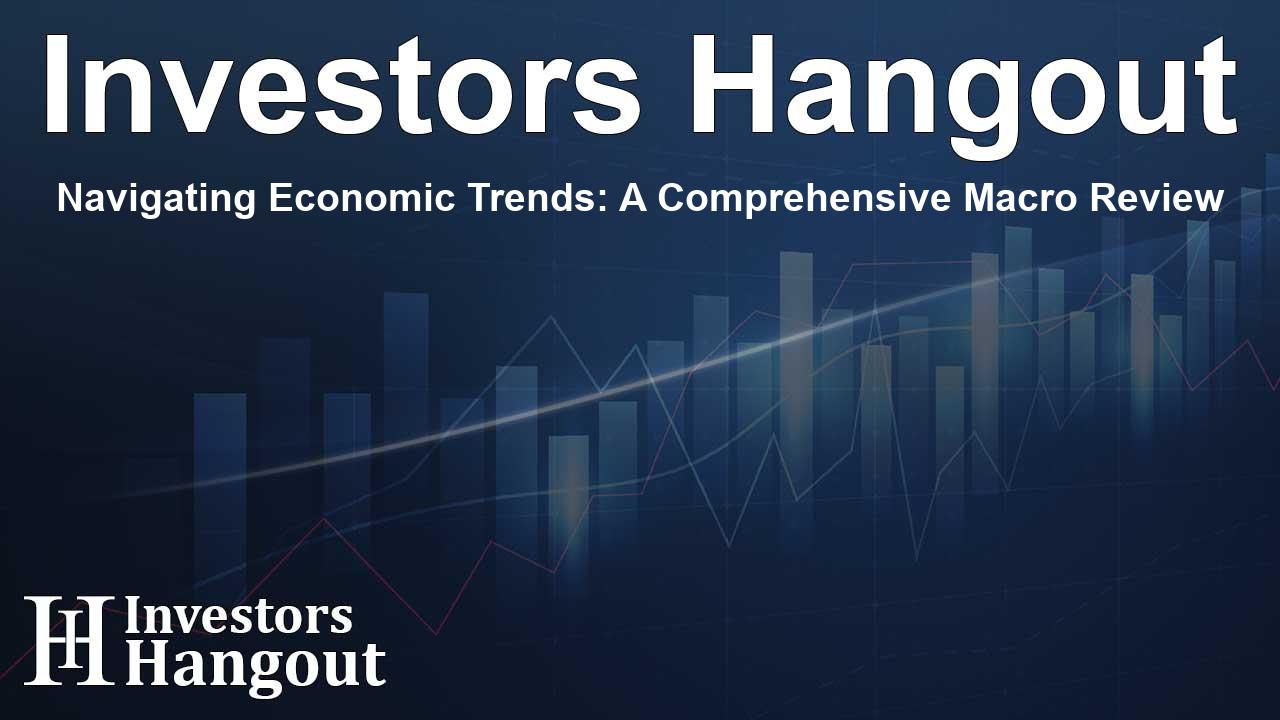Navigating Economic Trends: A Comprehensive Macro Review

Recent Market Developments
E-mini-Nasdaq 100 Futures have recently achieved an impressive milestone, hitting an all-time high of 22,901.50. Currently, they are trading close to these previous peaks. In tandem, E-mini S&P 500 Futures are approaching their historical highs, whereas Russell 2000 Index Futures are currently lagging, showing a down trend of 3.73% year-to-date.
The 'Year-to-Date Performance' data illustrates varied asset behaviors:
- The USD has seen a decline of 9.93% YTD.
- Energy commodities are slightly down YTD, contributing to the stabilization of inflation, yet still above the Federal Reserve’s target of 2%.
- Precious and industrial metals have thrived, with Platinum, Palladium, Copper, Gold, and Silver being notable top performers.
- G10 FX futures have outperformed the USD significantly, with the Euro noted for a 12.06% increase YTD.
- The market capitalization of the S&P 500 has rebounded to its peak, standing at an impressive $54.6 trillion.
Key Questions for Upcoming Economic Trends
As we look ahead, several critical questions emerge regarding:
- Interest Rates
- Inflation Trends
- Expected GDP Growth
Understanding the Federal Reserve's Dot Plot
The Federal Reserve has shown hesitance to implement rate cuts, primarily due to concerns regarding potential inflation driven by tariffs. The current dot plot indicates a median forecast suggesting that the federal funds rate might decline to 3.9% by the end of the year, anticipating two cuts of 25 basis points each.
Nevertheless, there are mixed outlooks among Fed officials:
- 7 officials believe rates should remain unchanged.
- 2 expect one rate cut.
- 8 foresee two cuts.
- 2 predict three cuts, showing a divided opinion.
Diverging Perspectives: Market vs. Federal Reserve
According to the CME FedWatch Tool, market predictions include:
- Two cuts of 25 basis points expected by October of the upcoming year.
- A 65% likelihood of a third cut by the year's end.
- By late 2026, rates may stabilize around the 3.00% to 3.25% range.
Many Fed officials have adopted a more hawkish tone leading up to the upcoming policy meeting, except for one key governor. Anticipations surrounding market influences suggest a possible appointment of a more dovish figure by President Trump could alter future policy directions.
Analysts at Morgan Stanley are forecasting a reduced chance for cuts in the upcoming year, speculating on deeper, more substantial reductions in 2026. They emphasize that short-term tariff-induced inflation has resulted in weakened consumer spending, linked to greater transactions costs due to tariffs.
The Impact of Government Debt on Economic Strategy
The financial burden of servicing the national debt has reached staggering levels, now ranking as the third-largest government expenditure at a monumental $1.03 trillion, surpassing even defense spending. With the national debt exceeding $37 trillion, conversations around rate reductions become vital for fiscal management and refinancing opportunities.
Fed's Economic Projections and Their Implications
- Real GDP growth for the year has been downgraded to 1.4% from a previous estimate of 1.7%.
- The PCE inflation outlook has been increased to 3.0% from an earlier 2.7% projection.
Such adjustments indicate sustained stagflation risks where growth wanes while inflation persists.
Implications of Fiscal Policy Changes
As the Senate prepares to vote on President Trump's proposed tax cuts and spending initiatives, discussions abound regarding the potential additions to national debt, projected to reach an increase of $3.3 trillion over the next decade.
Despite optimistic feelings around trade agreements, the significant tariffs, particularly on Chinese goods, remain a concern, currently at 55%. This could lead to inflationary pressures and further government debt. Observations also point to a shift toward a “Modern Mercantilist” approach, reflecting a profound change in economic strategy.
Geopolitical Dynamics Impacting the Markets
In the Middle East, the delicate ceasefire between Iran and Israel poses varying risks, particularly as concerns arise about nuclear developments. In Eastern Europe, the stalemate in the Russia-Ukraine conflict suggests no clear resolution remains in sight.
NATO is pressing forward with a commitment to bolster defense budgets, aiming for 5% of GDP dedicated to defense, a significant emphasis on core and related expenditures, including support to Ukraine.
However, the landscape in Asia displays ongoing stability talks, as demonstrated by China’s hosting of the Shanghai Cooperation Organization summit, emphasizing counter-terrorism and regional partnerships.
Concluding Insights
The current global stage reflects an era of complex and multi-faceted relationships. The emerging order continues to evolve, making it progressively challenging to discern fact from misinformation. For market participants, closely monitoring price movements serves as a vital indicator, as markets typically react ahead of formal announcements.
Frequently Asked Questions
What are E-mini-Nasdaq futures?
E-mini-Nasdaq futures are electronically traded contracts that represent a portion of the Nasdaq-100 Index, thus allowing investors to speculate or hedge against movements in this market segment.
What factors are influencing the current economic landscape?
Current influences include interest rate projections, inflation rates, and the implications of government debt alongside geopolitical events that could shift market perspectives.
How does government debt affect economic policy?
High levels of government debt can compel policymakers to reconsider interest rates and fiscal strategies to manage debts while attempting to spur economic growth.
What is the significance of the Federal Reserve's dot plot?
The dot plot provides insight into Federal Reserve officials' expectations for future interest rate changes, reflecting their monetary policy outlook.
How do geopolitical issues impact global markets?
Geopolitical tensions can influence market stability, investor confidence, and global trade dynamics, often resulting in volatility in financial markets.
About The Author
Contact Lucas Young privately here. Or send an email with ATTN: Lucas Young as the subject to contact@investorshangout.com.
About Investors Hangout
Investors Hangout is a leading online stock forum for financial discussion and learning, offering a wide range of free tools and resources. It draws in traders of all levels, who exchange market knowledge, investigate trading tactics, and keep an eye on industry developments in real time. Featuring financial articles, stock message boards, quotes, charts, company profiles, and live news updates. Through cooperative learning and a wealth of informational resources, it helps users from novices creating their first portfolios to experts honing their techniques. Join Investors Hangout today: https://investorshangout.com/
The content of this article is based on factual, publicly available information and does not represent legal, financial, or investment advice. Investors Hangout does not offer financial advice, and the author is not a licensed financial advisor. Consult a qualified advisor before making any financial or investment decisions based on this article. This article should not be considered advice to purchase, sell, or hold any securities or other investments. If any of the material provided here is inaccurate, please contact us for corrections.
